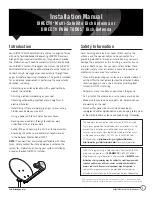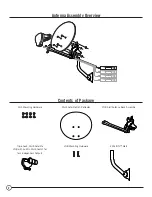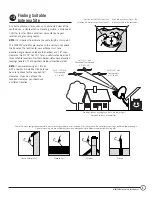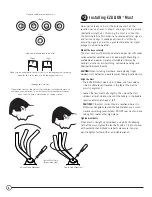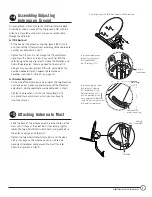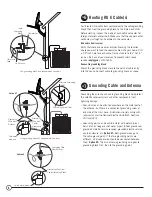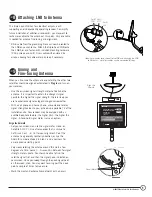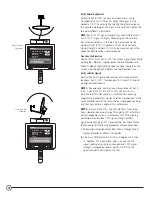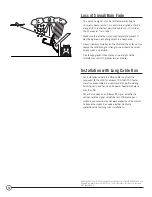
10
Verify Azimuth alignment
Switch to Sat B (119°) on your on-screen menu, using
Transponders 23, 25, 29 or 31. Verify that signal is also
peaked at 119° by very slightly rotating the antenna around
the penciled marking on the mast. Once satisfied, tighten the
two Azimuth/Mast clamp bolts.
NOTE:
Sat B (119°) signal strength may read different than
Sat A (101°) signal strength, depending on the satellite
transmission patterns in the area. You only need to see
whether Sat B (119°) is peaked and not try to compare
signal strength numbers. It’s OK to be close but not at the
peaks for both locations simultaneously.
Fine-tune the Elevation
Use Sat B (119°) or Sat A (101°) on-screen signal meter. While
holding the LNB Arm, slightly loosen the two Elevation nuts.
Move it up/down slightly and observe the signal strength on the
screen. Find the peak and tighten the two Elevation nuts.
Verify satellite signals
Confirm the final signal-peak readings at all three satellite
locations. Sat C (110°, Transponders 8, 10 and 12.) should
be aligned automatically.
NOTE 1:
Occasionally, you may see a transponder at Sat A
(101°), Sat B (119°) or Sat C (110°) not active, it is
possible that this transponder is reserved for upcoming
programming expansion. Switch to other transponders at the
same satellite location to verify that you have good readings
and that your antenna alignment is satisfactory.
NOTE 2:
In most of the U.S., the Tilt Adjustment should be
fixed. However, because of large Tilt angle to 119° satellite in
Eastern Seaboard states, a small amount of Tilt fine-tuning
adjustment may improve 119° signal strength without
significantly changing 101° signal reading. For these states,
the following Tilt fine-tuning procedures are recommended:
1.
Follow alignment procedures from Step 1 through Step 9;
tighten Elevation and Mast clamp bolts.
2.
Fine-tune Tilt Adjustment first by +3 degrees and then
–3 degrees. Tilt is optimized when you see the 101°
signal reading essentially unchanged and 119° signal
strength improved by several points. Set Tilt to the
optimized point and tighten Tilt nuts.
Antenna
Transponder: 1, Sat A
Antenna Location:
Azimuth: 152
Elevation: 50
Tilt: 102
Clear
OK
Current Level: 0 Peak Level: 91
Signal:
Antenna
Transponder: 23, Sat B
Antenna Location:
Azimuth: 152
Elevation: 50
Tilt: 102
Clear
OK
Current Level: 0 Peak Level: 75
Signal:
Verify Azimuth
Alignment
Fine-tune the
Elevation

